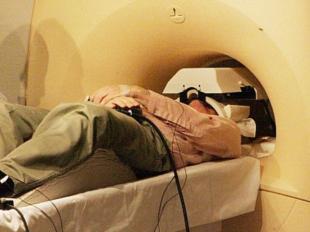
Patches that ooze medication slowly through the skin are becoming more popular, from over-the-counter nicotine patches to prescription patches that deliver estrogen, pain medication, Alzheimer's or Parkinson's drugs, even an anti-nausea drug for chemotherapy recipients.
But the US Food and Drug Administration just discovered that some are missing a safety warning about MRI compatibility. MRI stands for magnetic resonance imaging.
More than a quarter of the 60 different drug patches sold contain traces of aluminum or other metals in their backing, the part that makes them stick to the skin, estimated Dr Sandra Kweder, the FDA's deputy drug director.
The metal may be invisible; the patch even may appear completely clear. But affected patches contain just enough metal to conduct electricity, meaning a patch worn during an MRI scan can overheat and cause a skin burn similar to a bad sunburn.
The FDA recently learned of a few patients who suffered patch burns, none severe. In January, tracking the source of one burn, officials found that Teva Pharmaceuticals' fentanyl painkiller patch lacked the MRI warning. The FDA then found a variety of other drug patches also lacked the warning.
On Thursday, the FDA issued a public health advisory: Tell your doctor about any medication patches, so the professional can decide which should be removed before an MRI, how soon before the scan, and when it can be reapplied.
"If there's any uncertainty, just don't wear it in the machine," Kweder said. "It's just the smart thing to do."
As for patch makers, FDA is reviewing every product's label to be sure ones that are supposed to carry the safety warning do. Some may be missing because a patch was reformulated to add metal after its label was written; other times FDA acknowledged it just did not ensure the warning was present in the first place.
Now the agency is considering having an MRI warning somehow be put on the individual patch, not just the box it comes in.
"We have to look at the different configurations of these patches and what's going to be practical to allow for this," Kweder said.
Associated Press



Reader Comments
to our Newsletter